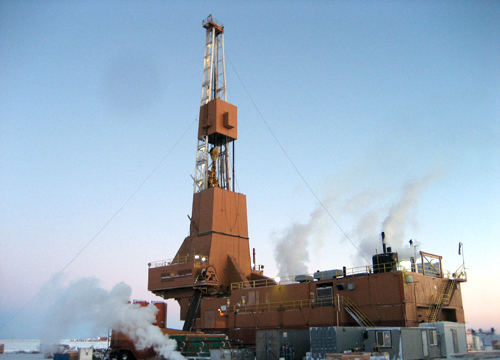

The Wilderness Society

The first news from Alaska’s North Slope reads like the beginning of a disaster movie. Oil workers on a drilling rig hit a pocket of gas and quickly evacuate to avoid the hazard of an explosion as gas bursts from the ground. The well is out of control and an estimated 42,000 gallons of drilling mud spills onto the Arctic tundra.
A day later, the well still is out of control as blowout experts make their way to the Arctic from Texas. This time, the well’s operators are lucky. Nobody dies, the gas doesn’t ignite, and no oil spills—not in the early stages, anyway. But this incident is an example of what a dangerous, complex and dirty business it is to drill for oil. Unforeseen things happen, like drill bits hitting gas pockets that “kick” violently and with great pressure. Workers lose control. And expert help can be very far away.
The Qugruk 2 well is less than two miles from the coast of the Arctic Ocean, and operated by a Spanish company called Repsol which is new to operating in Alaska but owns more than 100 offshore leases in the Chukchi Sea. What will happen when oil workers lose control of an offshore well and oil spews into pristine Arctic waters? Will the workers be able to evacuate if seas are rough, or helicopters can’t fly because of high winds? Will they call their friends in Texas to bring the blowout under control?
Stormy, icy seas are nothing like the dry desert oil fields of West Texas. They’re nothing like most regions of the world where the oil industry has had little success bringing blowouts under control in far more hospitable conditions.
Alaska is a different animal. After a 20,000-gallon oil spill in Alaska’s Cook Inlet, near Anchorage, in 1989, extensive moving ice prevented workers from even attempting a cleanup.
Despite what oil executives want us to believe, the industry doesn’t have the technology to recover spilled oil in the Arctic. They don’t have the scientific data to understand the ecosystem in the Arctic Ocean, or how it would be affected by drilling. And a late-summer blowout at an offshore well site would be catastrophic for fish and marine mammals, and the Alaska Natives who depend on them as a food source.
The Qugruk 2 blowout is a reminder of just how undeniably complicated and risky it is to drill for oil. That’s why sensitive places like the Arctic Ocean, the Arctic National Wildlife Refuge, and the Teshekpuk Lake region of the National Petroleum Reserve-Alaska should be protected from the oil industry.
The next time there’s a blowout, Big Oil—and the Arctic—might not be as lucky.
For more information, click here.

 233k
233k  41k
41k  Subscribe
Subscribe 